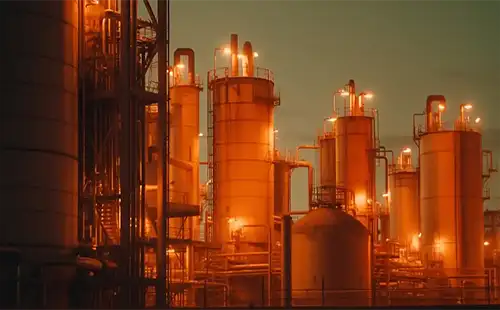The refractory industry, with its deep-rooted history in human civilization, has always played a crucial role in the advancement of various industries, including steel, cement, glass, and petrochemicals. By producing products that can withstand extreme temperatures and pressures, this industry enables industrial processes in challenging environments.
Today, the refractory industry faces both challenges and opportunities. On the one hand, the demand for high-quality and efficient refractories is on the rise. This stems from factors such as the growth of various industries, the increasing focus on energy-efficient consumption, and stricter environmental regulations. On the other hand, technological advancements and innovations are transforming this industry.
Here are some of the key transformations and innovations expected to shape the future of the refractory industry:
Trends and developments in the future of the refractory industry
1. Advanced Refractory Materials
- Ceramic Refractories: A new generation of ceramic refractories with properties like high density, corrosion resistance, and low thermal conductivity is under development. These materials can be used in high-temperature applications such as metal melting furnaces.
- Composite Refractories: Composite refractories are made from a combination of ceramics, metals, and other materials. These materials can offer a variety of properties such as strength, flexibility, and thermal shock resistance.
- Nanostructured Refractories: Nanostructured refractories are made from extremely fine particles of various materials like ceramics, metals, and graphene. These materials can exhibit unique properties such as high thermal conductivity, corrosion resistance, and high strength.
2. Novel Production Processes
- 3D Printing: 3D printing enables the production of refractory parts with complex shapes and precise geometries. This can lead to increased efficiency and reduced waste in manufacturing processes.
- Melt Casting: Melt casting can be used to produce high-purity refractory materials with improved mechanical properties.
- Chemical Synthesis: Chemical synthesis allows for the production of refractories with controlled atomic and molecular structures. This can lead to enhanced properties of refractory materials.
3. Smart Monitoring and Control
- Sensors and Measurement Tools: Sensors and measurement tools can be used to monitor conditions inside furnaces and other industrial equipment. This can help operators identify and resolve problems before failures occur.
- Modeling and Simulation: Computer modeling and simulation can be used to predict the performance of refractories under various conditions. This can help in selecting the right refractory material for each application.
- Internet of Things: The Internet of Things can be used to connect refractory equipment to a network and collect data on their performance. This data can be used to improve the efficiency and lifespan of refractories.
4. Focus on Sustainability
- Eco-Friendly Refractories: Eco-friendly refractories are produced using sustainable raw materials and low-emission manufacturing processes.
- Recycling of Refractory Materials: Recycling refractory materials can help reduce waste and conserve natural resources.
- Energy-Efficient Refractories: Using high-efficiency refractories can help reduce energy consumption in industrial processes.
5. Transformations in Various Industries
- Steel Industry: The demand for refractories in the steel industry is expected to grow due to the increasing production of steel and the adoption of more efficient steelmaking processes.
- Cement Industry: The cement industry is also a major consumer of refractories. The demand for refractories in this industry is expected to be driven by the growing construction sector in developing countries.
- Glass Industry: The glass industry is another important application area for refractories. The demand for refractories in this industry is expected to increase due to the rising demand for glass products for construction and packaging applications.
- Petrochemical Industry: The petrochemical industry also relies heavily on refractories. The demand for refractories in this industry is expected to be driven by the increasing production of petrochemicals and the adoption of stricter environmental regulations.
Conclusion
In conclusion, the future of the refractory industry is bright, with numerous opportunities for growth and innovation. The industry is expected to benefit from the increasing demand for high-quality and sustainable refractory materials, as well as the advancements in technology and manufacturing processes. Companies that can adapt to these changes and provide innovative solutions will be well-positioned for success in the years to come.


Leave a Reply